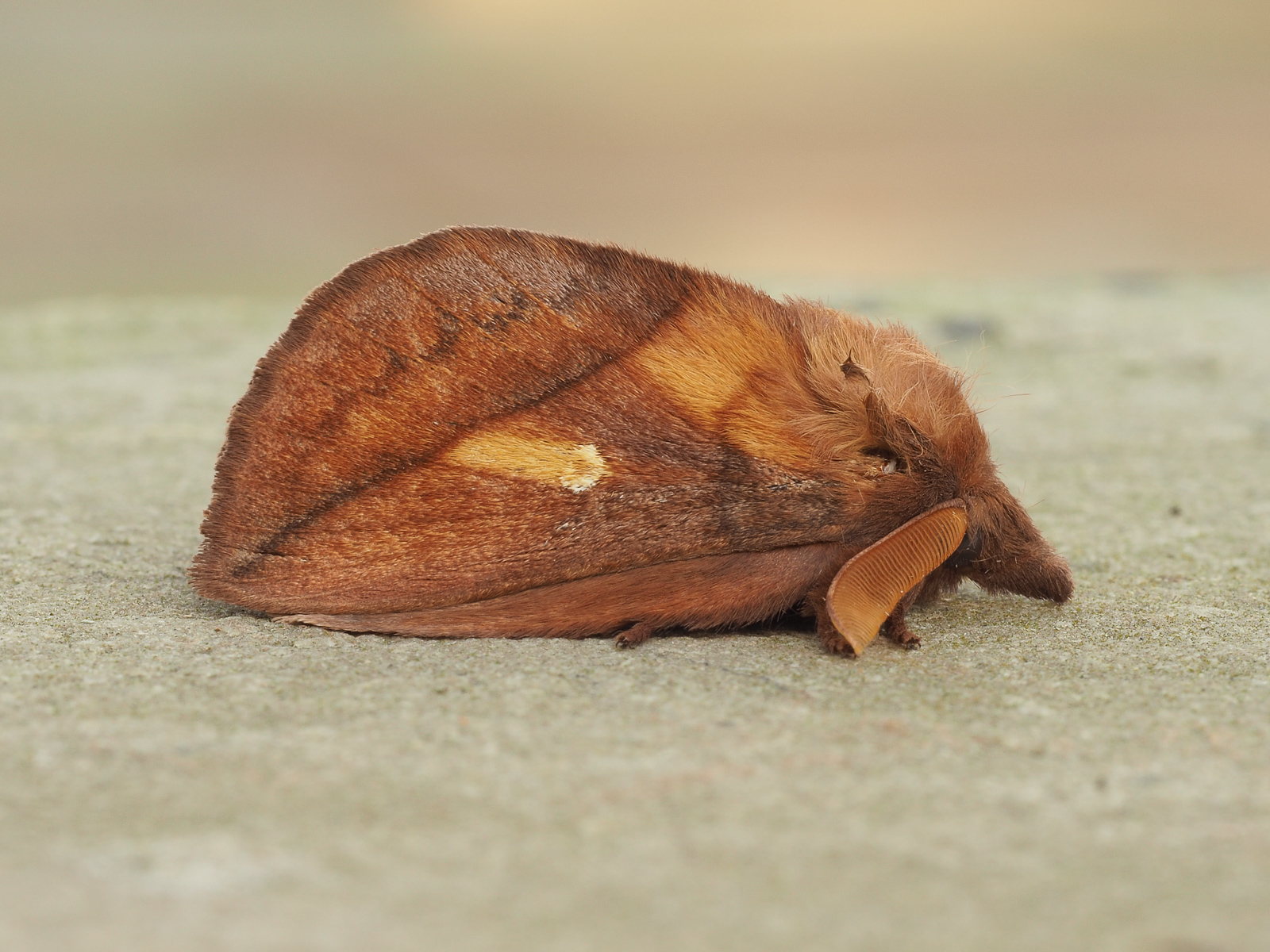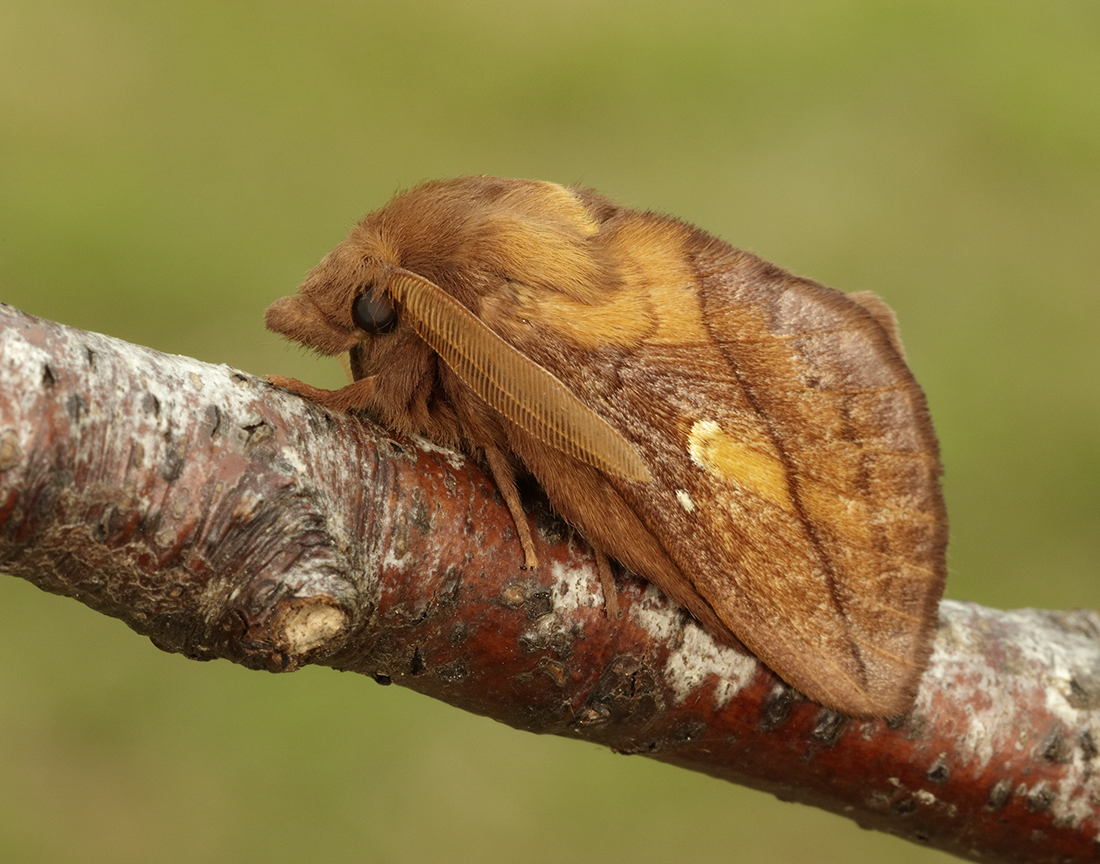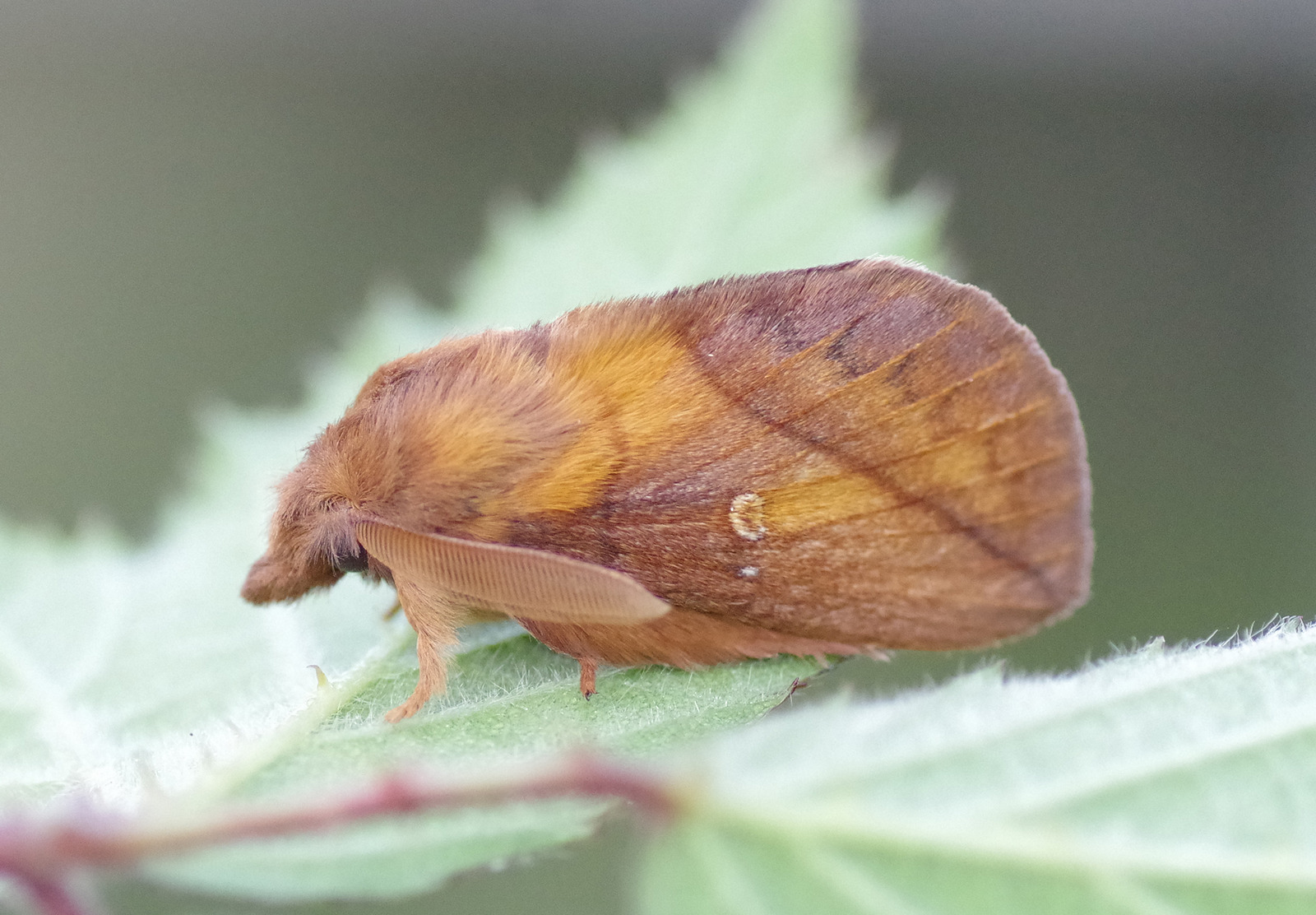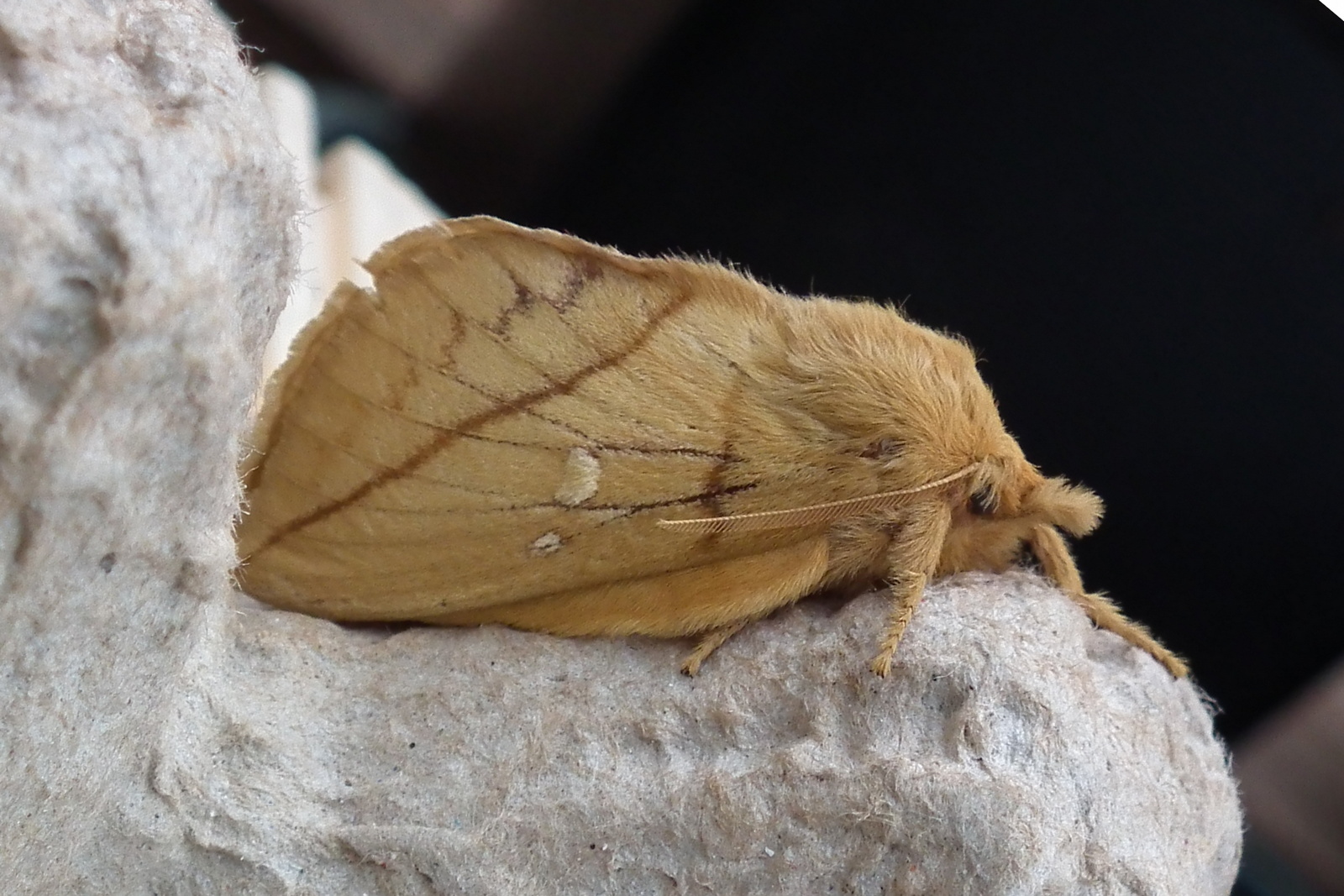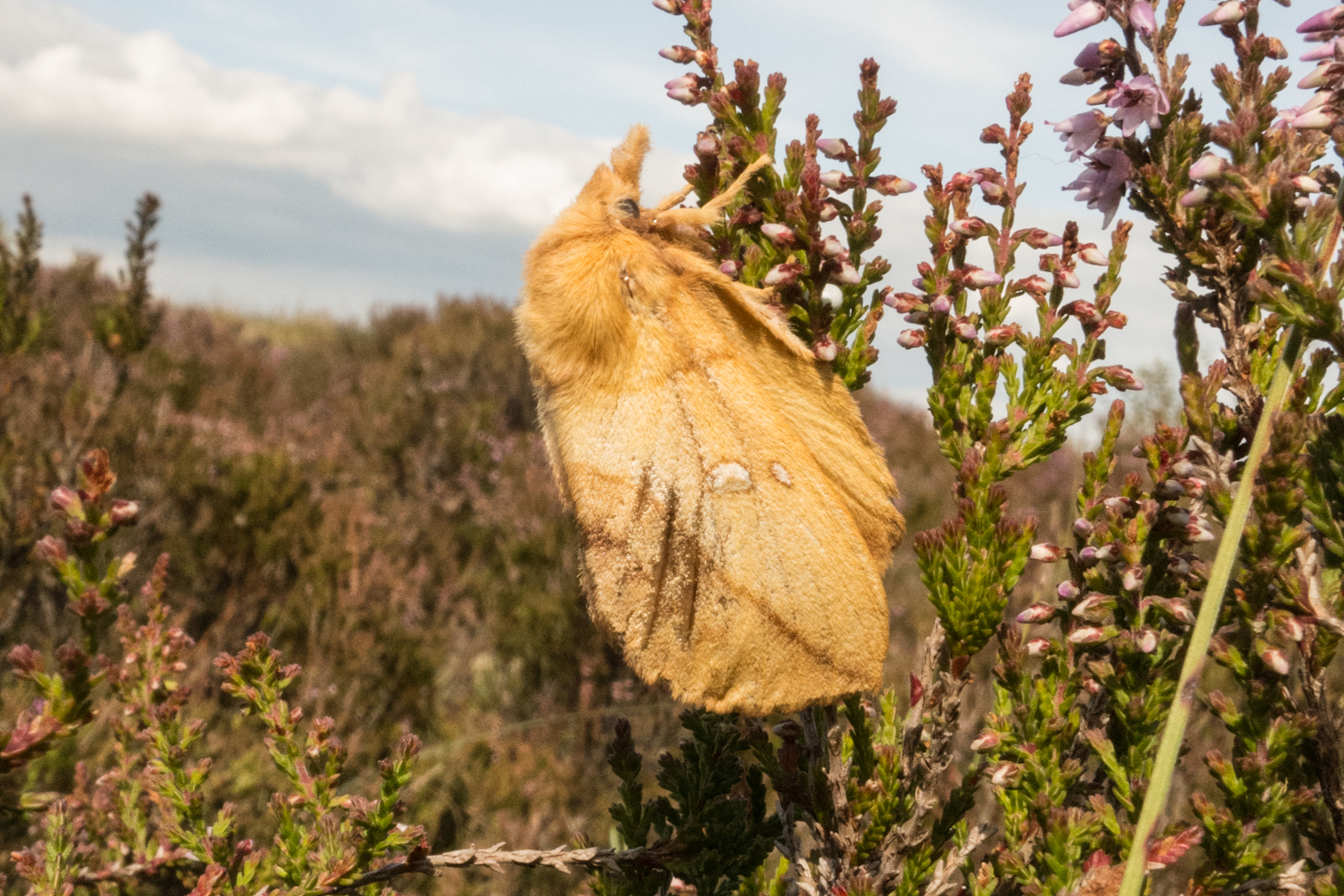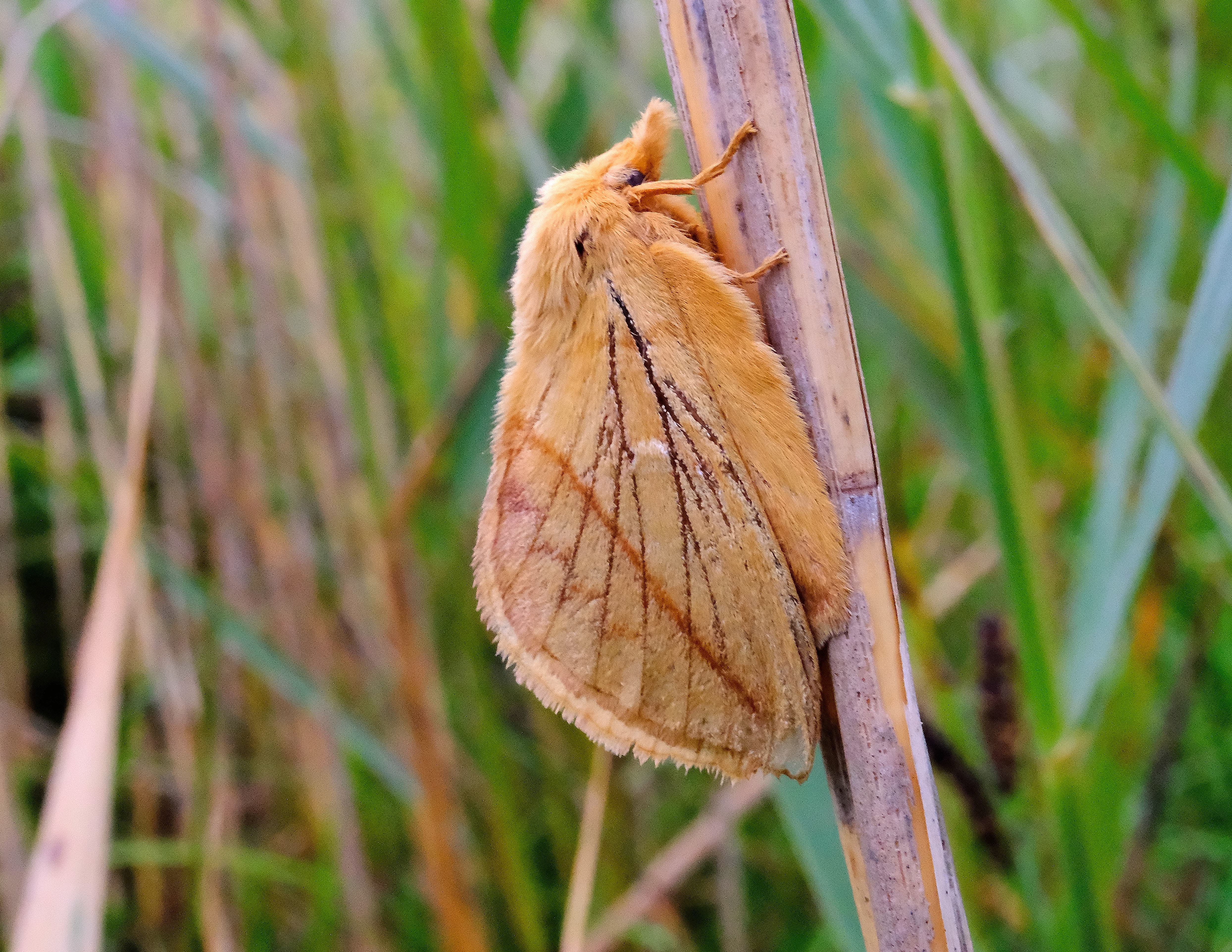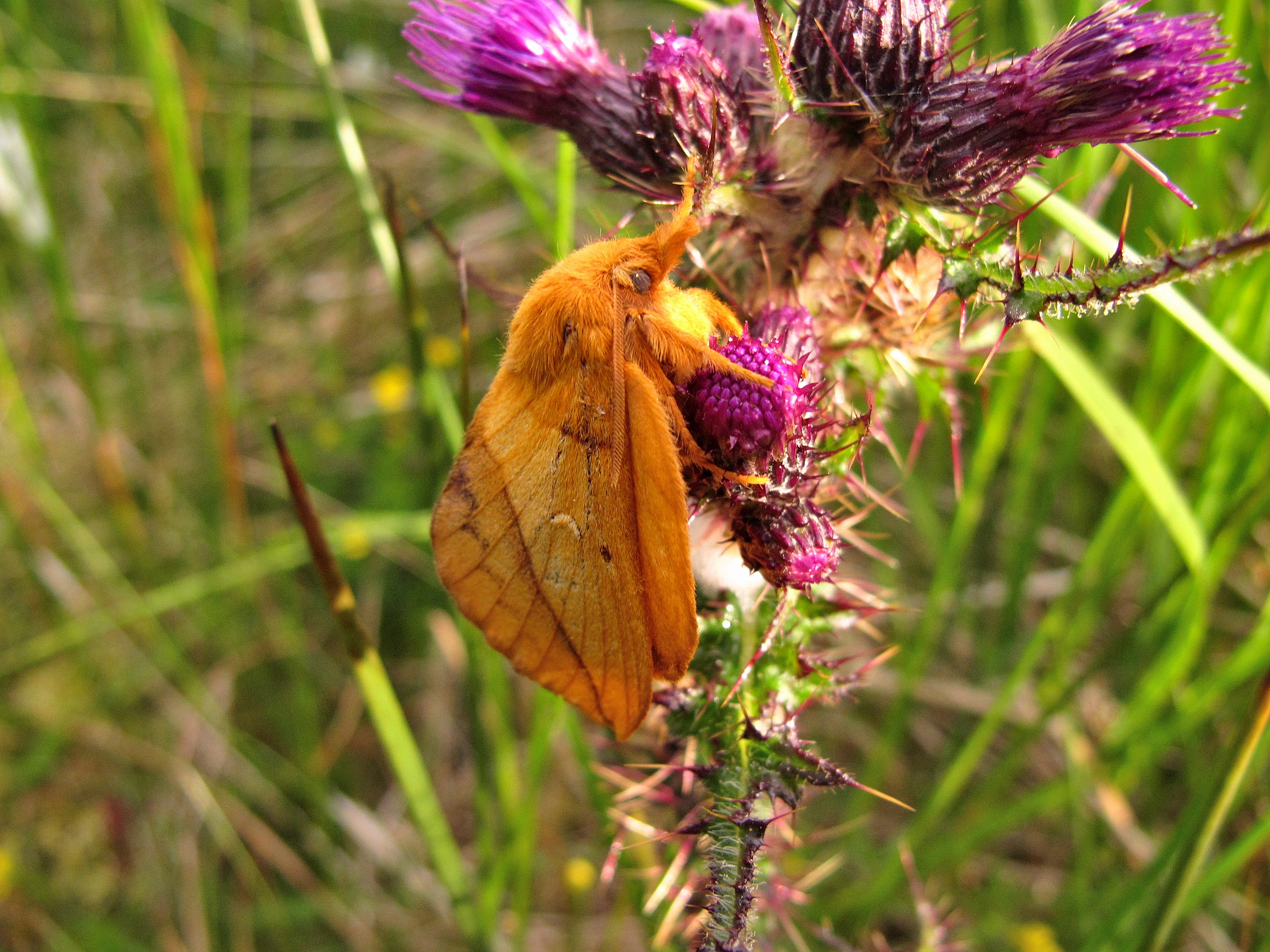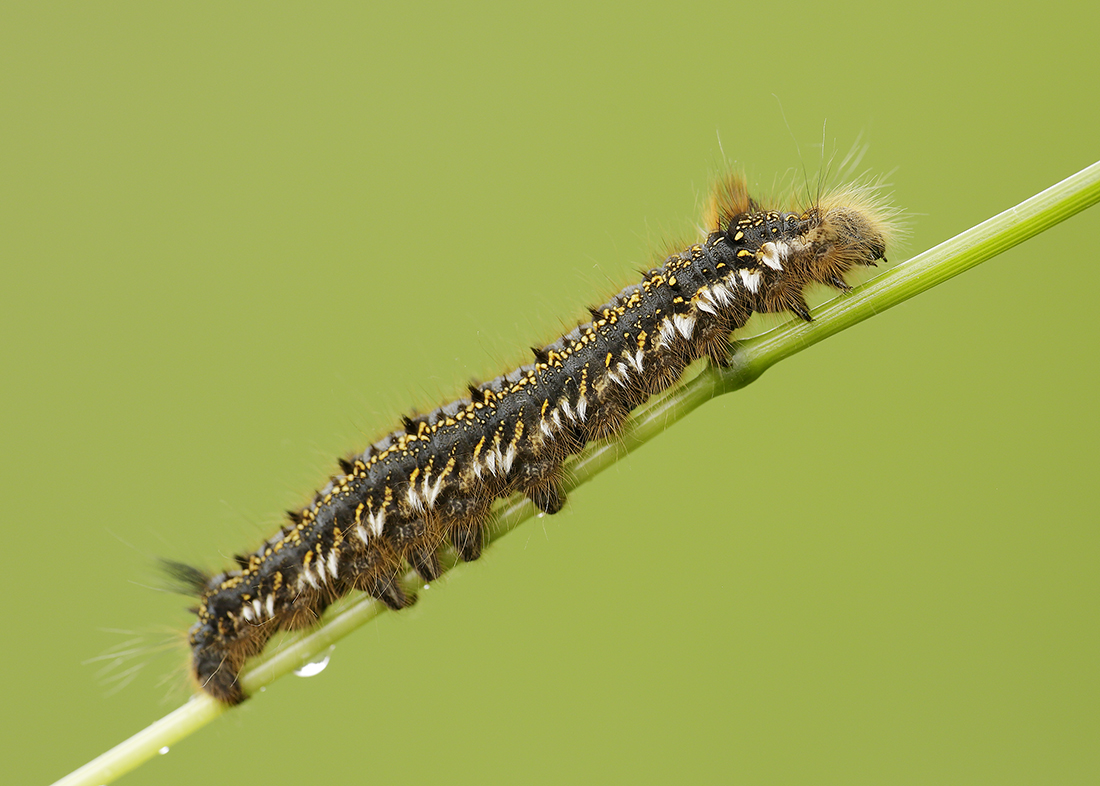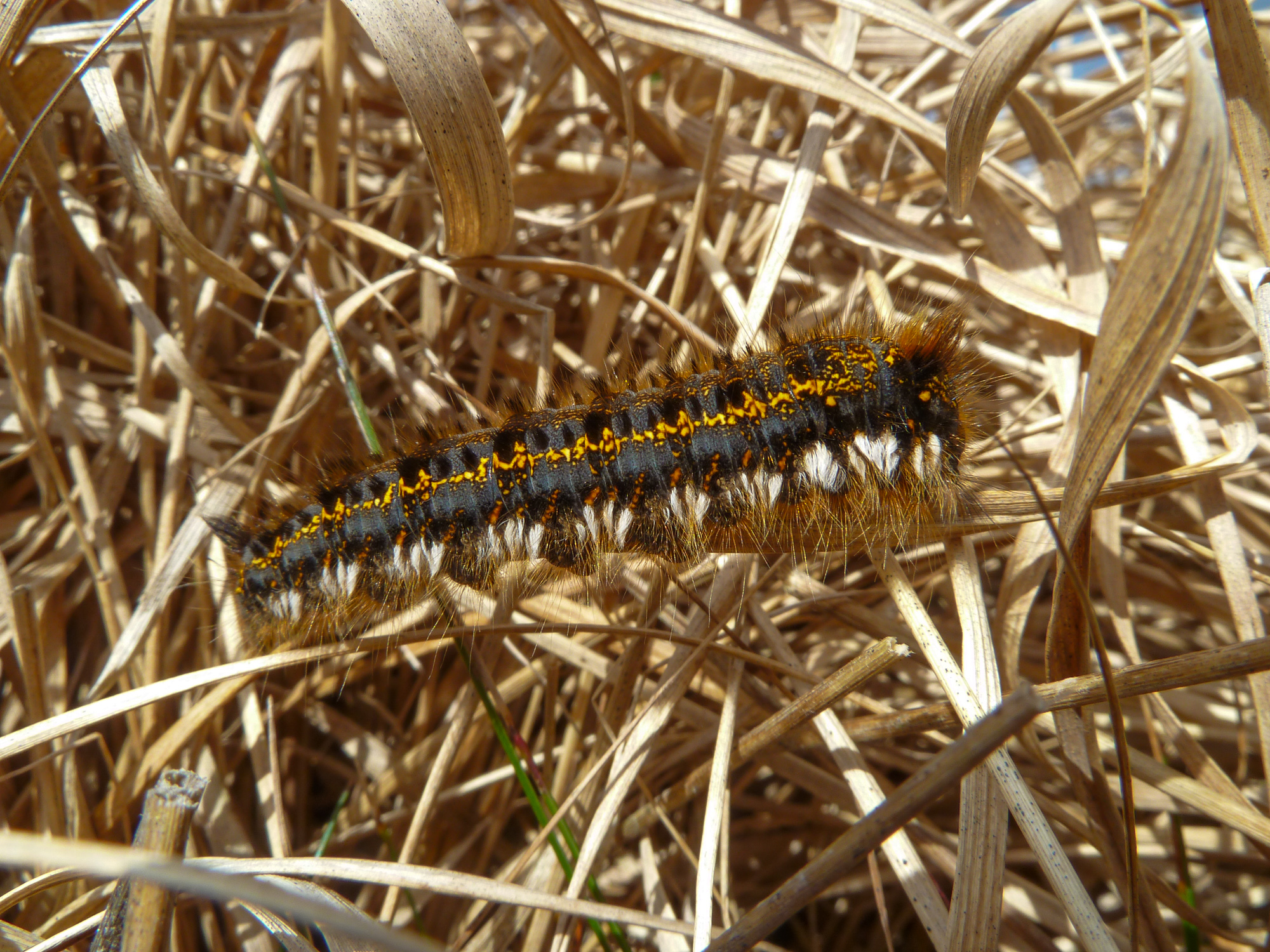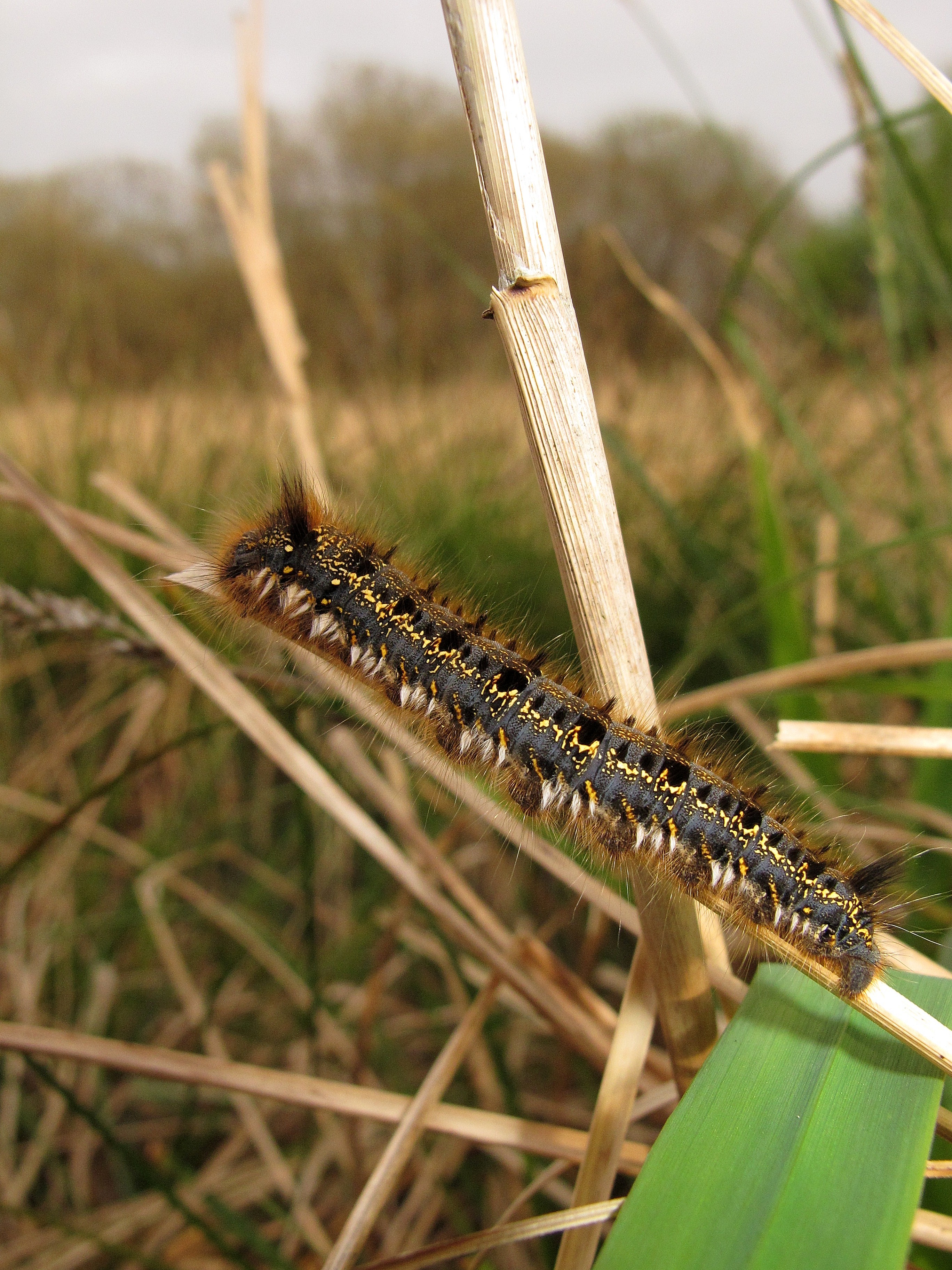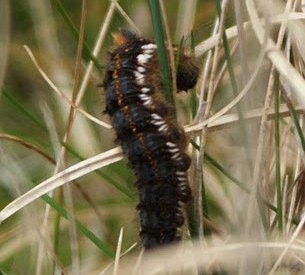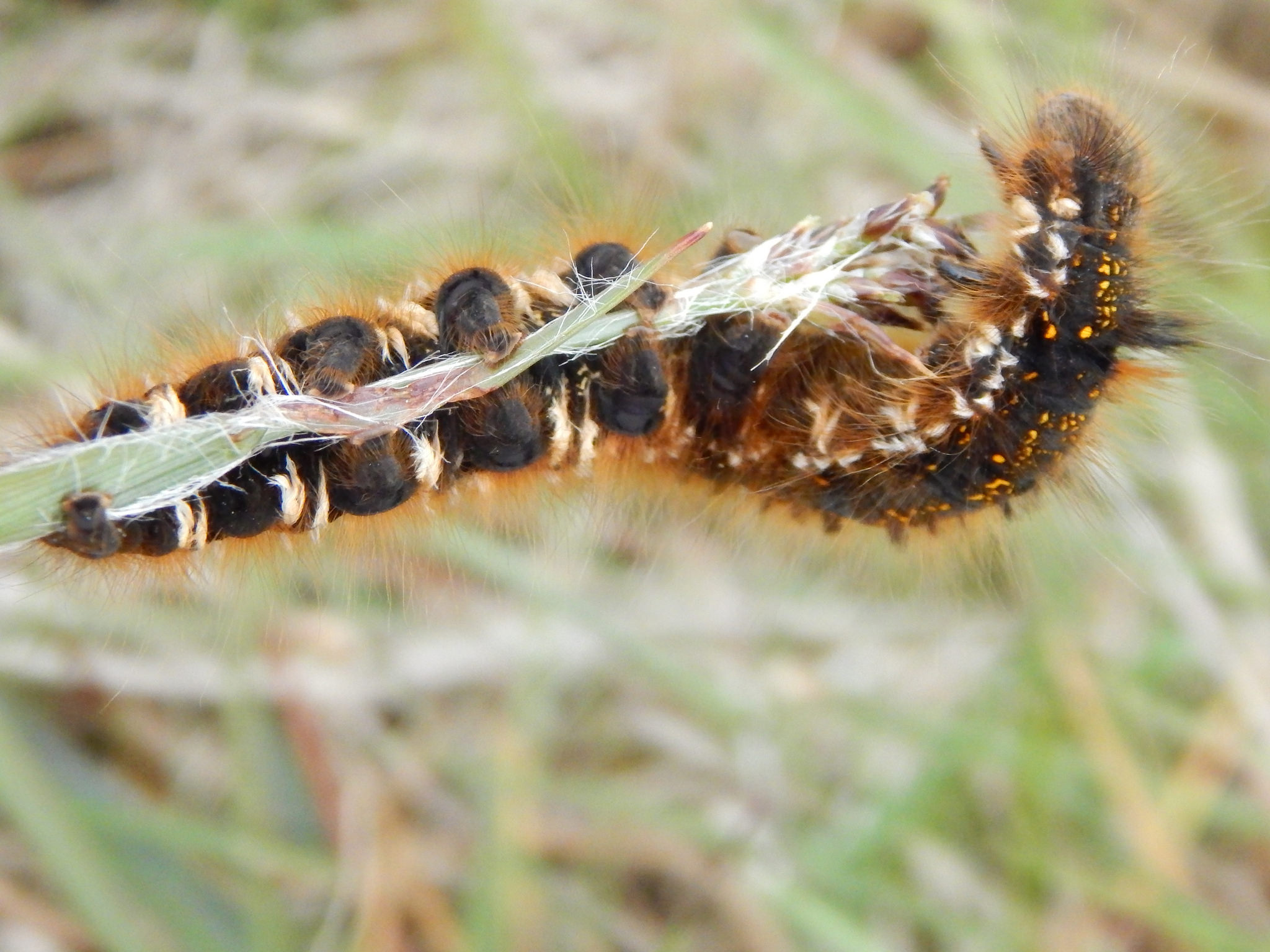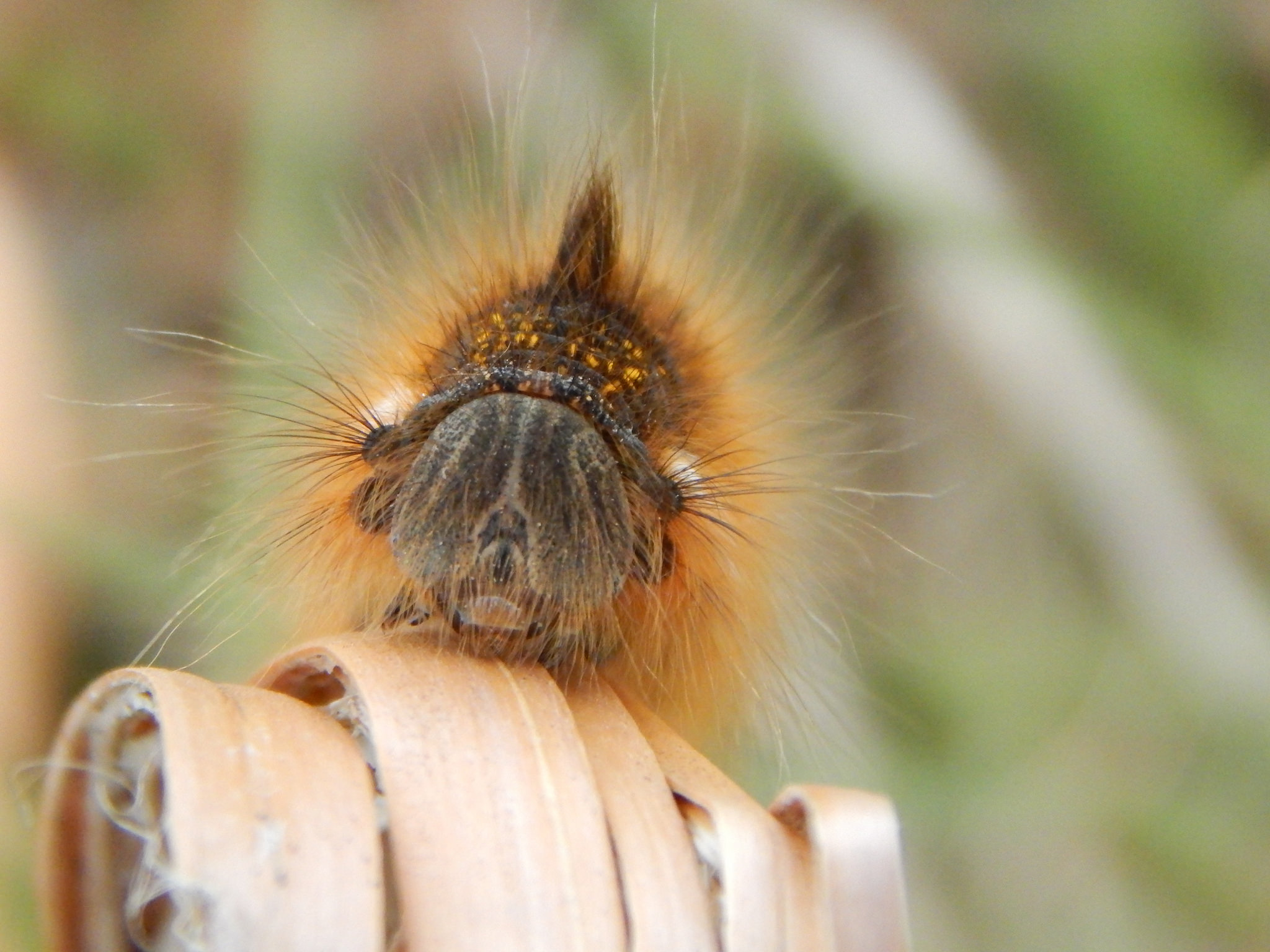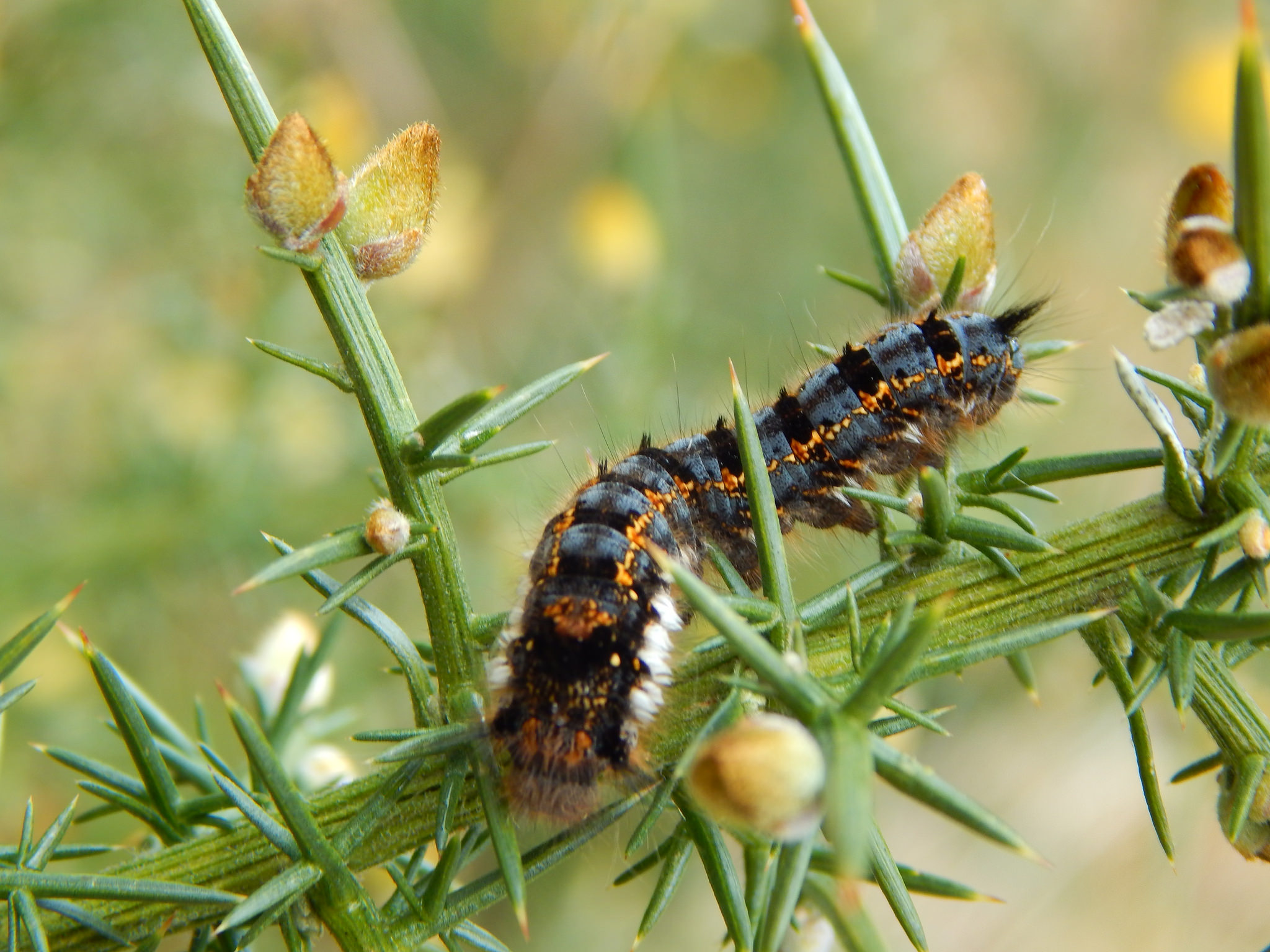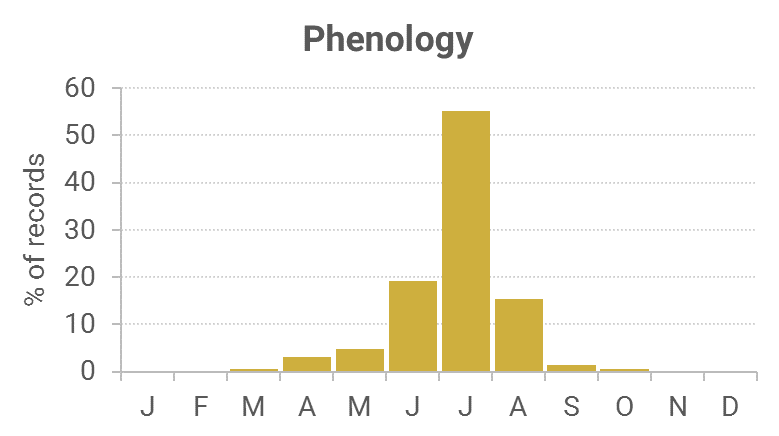Identification
Unmistakable. Males (feathered antennae) are darker than the larger females.
Recording Method
Attracted to light.
Life cycle
One generation. Overwinters as a small larva during August to June. Pupation site is usually on a grass stem, or can be under a log, where the tapering cream-coloured cocoon is spun.
Larval foodplants
Larvae feed on a wide range of grasses, including reeds.
Habitat
Most frequent in wetland and damp grassland.
History
Lennon (1863) had found it common everywhere without giving any records. W. Douglas Robinson (1870-71) had found one or two larvae during September on Almorness (VC73). R. S. Gordon (1913) caught a female on a rush stem after dark at Corsemalzie on 14th June 1897, but adds that it was locally common in the larval state but rarely seen as an imago. In a large series of moths he bred on the females showed considerable variation in ground colour, ranging from pale yellow to orange, and brown.
Many records are from the Rothamsted stations and elsewhere, with many larvae and just a few pupae records. MOGBI (1992) recorded it as widespread across the region. It is still widespread in the first decade of the 21st century.
The yellowish form pallida Tutt was trapped on Barcloy Hill (VC73) on 15th July 2005.



